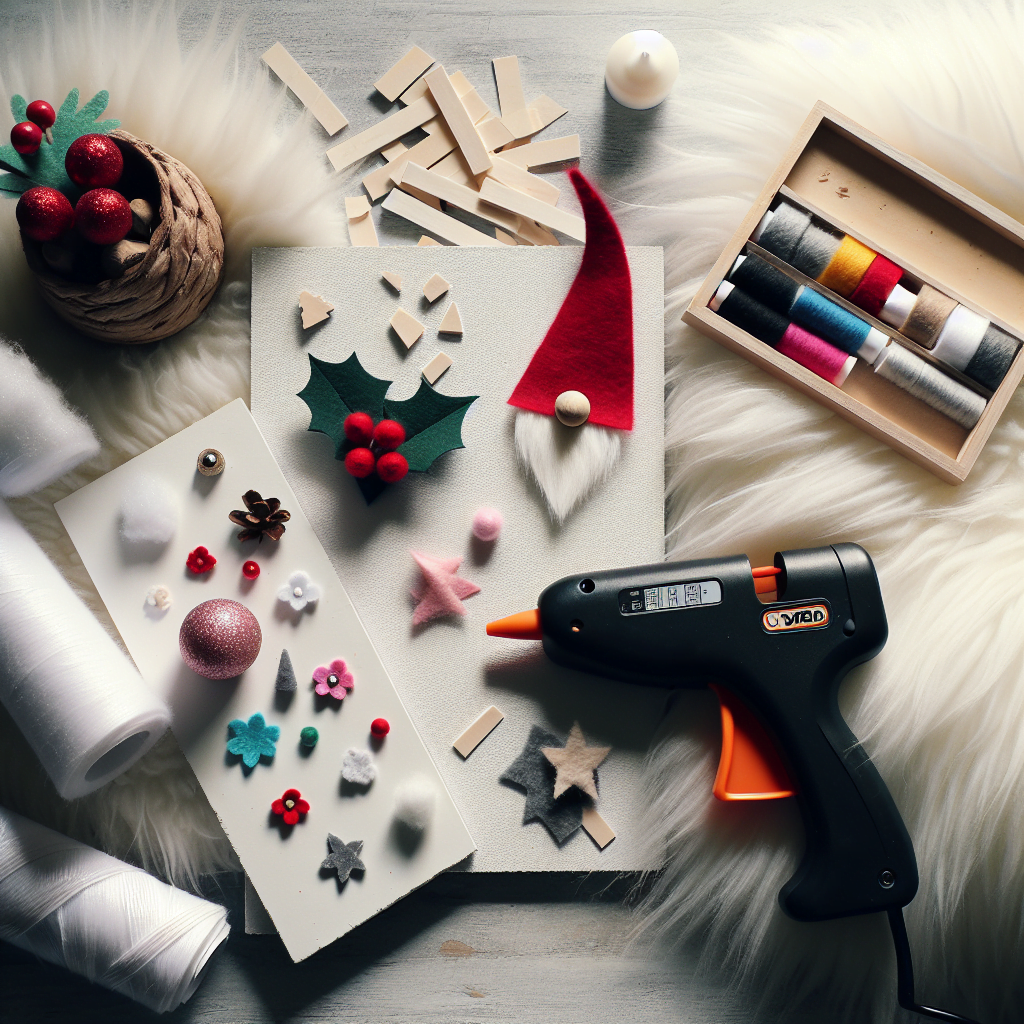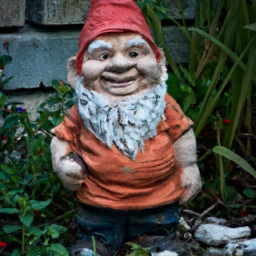As the festive season approaches, you might find yourself yearning to add a personal touch to your outdoor decorations. Look no further – “Essential Materials for Crafting Outdoor Christmas Gnomes” is just the right guide for you! This article provides you with a comprehensive list of necessary materials to create your own charming, weather-resistant Christmas gnomes– adding a distinctly unique character to your holiday decor. Get ready to immerse yourself in an exciting process of handcrafting your own festive masterpiece.
Selecting the Right Material for Durability
Choosing the right material is crucial when it comes to crafting outdoor gnomes. The material you select can add to the durability of your gnome and enable it to withstand different weather conditions, thus prolonging its lifespan.
Why durability is important
Durability is a key factor in making outdoor gnomes because it’s what ensures that your creation can withstand outdoor conditions. Furthermore, durable gnomes require less maintenance and are more likely to retain their original colors and shapes, making them a long-lasting addition to your garden.
Material options for outdoor use
There are several materials that are suitable for outdoor use. Some materials, like wood and ceramics, can resist moisture and are therefore ideal for places with heavy rain. On the other hand, materials like plastic and vinyl are more suitable for warmer climates as they can resist heat and direct sunlight.
Pros and Cons of different materials
Different materials have different pros and cons which you need to consider. Wood, for instance, is sturdy and gives a natural look, but it requires regular maintenance to prevent rot. Plastic is lightweight and easy to work with, but it can fade and crack under intense sunlight. Therefore, consider your local climate and the maintenance required before choosing a material.



Weatherproof Textiles for Gnome Outfits
After picking the base material, selecting the right textiles for gnome outfits is equally important. You will want a fabric that is resistant to different weather conditions without compromising the beauty of your gnome.
Types of weatherproof textiles
Several textiles are known for their weather-resistance. These include nylon, polyester, and acrylic. These fabrics do not absorb much water, which makes them ideal for outdoor use. They are also resistant to UV radiation, making them less likely to fade in direct sunlight.
Choosing the right textile for gnome outfits
When choosing a textile, consider its aesthetics and practicality. Nylon, for instance, is durable and weather-resistant but may not offer the cozy look commonly associated with gnomes. On the other hand, acrylic fabrics come in many different textures and colors, allowing for more design freedom.
Tips for sewing and handling weatherproof textiles
Working with weatherproof textiles requires extra care. For example, these fabrics can be slippery, so using pins can help maintain their position while sewing. Also, ensure to use a waterproof thread to prevent water absorption and eventual fabric damage.
Picking Suitable Fillers
Fillers play a pivotal role in giving your outdoor gnome its shape. Therefore, it’s important to select a filler that’s strong enough to maintain the gnome’s structure without weighing it down.
Different types of fillers
There are several fillers that you can use in your outdoor gnomes, such as foam, polyester stuffing, and even natural materials like dried beans. Each of these fillers has its own unique properties that add to the overall durability of your gnome.
Picking fillers that can withstand outdoor conditions
To ensure long-lasting durability, you must choose a filler that can withstand varying weather conditions. For instance, foam is water-resistant and allows for better shape retention, making it the perfect choice for places with high humidity.
How to fit in the filler into the gnome structure
Once you’ve selected your filler, carefully stuff it into your gnome’s structure to form its shape. Ensure you don’t overfill the gnome, as this can lead to stretching and eventually damage the gnome’s fabric.

Gnome Hat Materials and Design
The gnome hat is one of the iconic elements of gnome design. Therefore, it has to be made with a material that can maintain its shape and withstand harsh weather conditions.
Choosing materials for gnome hats
Materials like wool and felt are commonly used for gnome hats due to their insulating properties. They also maintain their shape well, even in windy conditions. Fleece is another good option, as it’s light, warm, and durable.
Designing a weatherproof gnome hat
Designing a weatherproof gnome hat involves choosing the right material and incorporating elements that contribute to its weather-resistance. For instance, consider adding a waterproof lining to the inside of the hat and using weather-resistant paint to add colors.
Tips for crafting the gnome hat
Crafting the gnome hat requires precision and patience. Make sure to measure the head of your gnome accurately before cutting out the hat shape. Also, use strong stitches while sewing the hat to ensure it stays in place and withstands various weather conditions.
Gnome Beard Materials and Techniques
A gnome isn’t complete without its signature beard. Therefore, choosing the right material and crafting techniques for the gnome beard is crucial for a realistic and durable outcome.
Choosing material for gnome beards
Common materials for gnome beards include artificial fur, felt, and wool. These materials provide a realistic look and feel and are relatively easy to work with.
Understanding the importance of rugged materials
Rugged materials like artificial fur not only add to the aesthetic of the gnome but also improve its durability. These materials can withstand wind, rain, and other weather conditions without losing their shape or color.
Crafting techniques for the gnome beard
Once you’ve selected your material, cut it into the desired shape and stitch it onto the gnome’s face. If you’re using fur, make sure to comb it regularly to maintain its fluffy look.
Gnome Nose Materials and Crafting
Another essential detail of a gnome is its nose. Like other elements, the material and crafting techniques used for its nose contribute significantly to the gnome’s durability and aesthetic.
Selection of material for gnomes’ nose
Materials like wood and polymer clay are commonly used for gnome noses because of their durability and ease of use. They are also weather-resistant, making them perfect for outdoor gnomes.
Crafting the gnome’s nose
Crafting the gnome’s nose involves shaping your selected material into a round, slightly protruding nose. Make sure it’s proportional to your gnome’s body, and don’t forget to add details like nostrils for a realistic effect.
Ensuring the nose is attached securely
Once the nose is crafted, using a strong adhesive will ensure that it stays in place. Additionally, taking the time to seal the join will further increase the nose’s durability and longevity.
Using Polymer Clay for Gnome Accessories
Aside from the main body, accessories add character and personality to your gnome. Polymer clay is a widely used material for gnome accessories due to its versatility and durability.
Advantages of using polymer clay
Polymer clay has many advantages, including its wide range of available colors, its ability to hold intricate shapes, and its excellent weather-resistance. These advantages make it an ideal material for crafting detailed gnome accessories.
Creating gnome accessories with polymer clay
From tiny tools to charming little hats, you can create a variety of accessories with polymer clay. It’s a versatile material that can be kneaded into any shape, and once baked, it hardens and becomes waterproof and weather-resistant.
Making weatherproof polymer clay accessories
To ensure your polymer clay accessories can withstand various weather conditions, make sure to bake them properly according to the manufacturer’s instructions. This will ensure that they harden correctly and become durable. A protective sealant can also be applied for added weather resistance.

Creating Gnome Boots and Details
Every gnome needs a solid pair of boots. The materials and details you choose for the boots can significantly affect the overall look of your gnome.
Choosing the right materials for gnome boots
Leather and faux leather are excellent materials for gnome boots because of their rugged look and durability. If you prefer a more natural look, you can also use felt or wool.
Crafting the gnome boots
When crafting the boots, remember to include details like laces, buckles, or patterns. These details will bring your gnome’s boots to life and add to its overall charm.
Incorporating details into the boots
Incorporating details into the boots can be as simple as adding stitching for laces or creating tiny buckles with polymer clay. These small details can make a big difference in the overall design of your gnome.
Using Paints and Seals for Weather-Resistance
To ensure the colors on your gnome stay vibrant and the gnome remains durable, you need to use weather-resistant paints and seals.
Types of weather-resistant paints
Many paints are formulated specifically for outdoor use. These paints are made to resist UV radiation, humidity, and temperature changes. They come in various colors, enabling you to paint your gnome in any design you like.
Applying paint on outdoor gnomes
Applying paint on your gnome is more than just adding color. You need to make sure you cover all the surfaces evenly, and depending on the paint type, you might need to apply several layers for a rich, vibrant color.
Choosing and applying seals for added protection
To offer additional protection to your gnome, consider applying a clear sealant after painting. This will protect the paint from weather damage and increase the gnome’s overall durability.
Safety Considerations when Crafting Outdoor Gnomes
While crafting gnomes, it’s crucial to take safety measures. These measures include being mindful of the tools you’re using and the way you place your gnome outdoors, among others.
Ensuring the safety of the crafting process
During the crafting process, be mindful of sharp tools and handle them with care to avoid injuries. If you’re using materials like polymer clay, ensure your workspace is adequately ventilated.
Safe placement of gnomes outdoors
When placing your gnome outdoors, choose a spot that is safe from numerous hazards, such as falling branches or heavy foot traffic. Also, ensure the gnome is securely anchored to avoid it toppling over due to wind or other unpredictable factors.
Maintenance and safety checks of outdoor gnomes
Regularly check your gnome for damage or wear and tear. A quick maintenance check-up can make your gnome last longer and keep it looking its best. Be particularly vigilant after severe weather events, as these can cause the most harm to your gnome.
Making outdoor gnomes can be a fun and rewarding hobby. With the right material choices and careful crafting, these charming creatures will stand the test of time, adding character to your garden regardless of the season. So, get creative and let your imagination take shape in your very own outdoor gnomes. Happy crafting!


